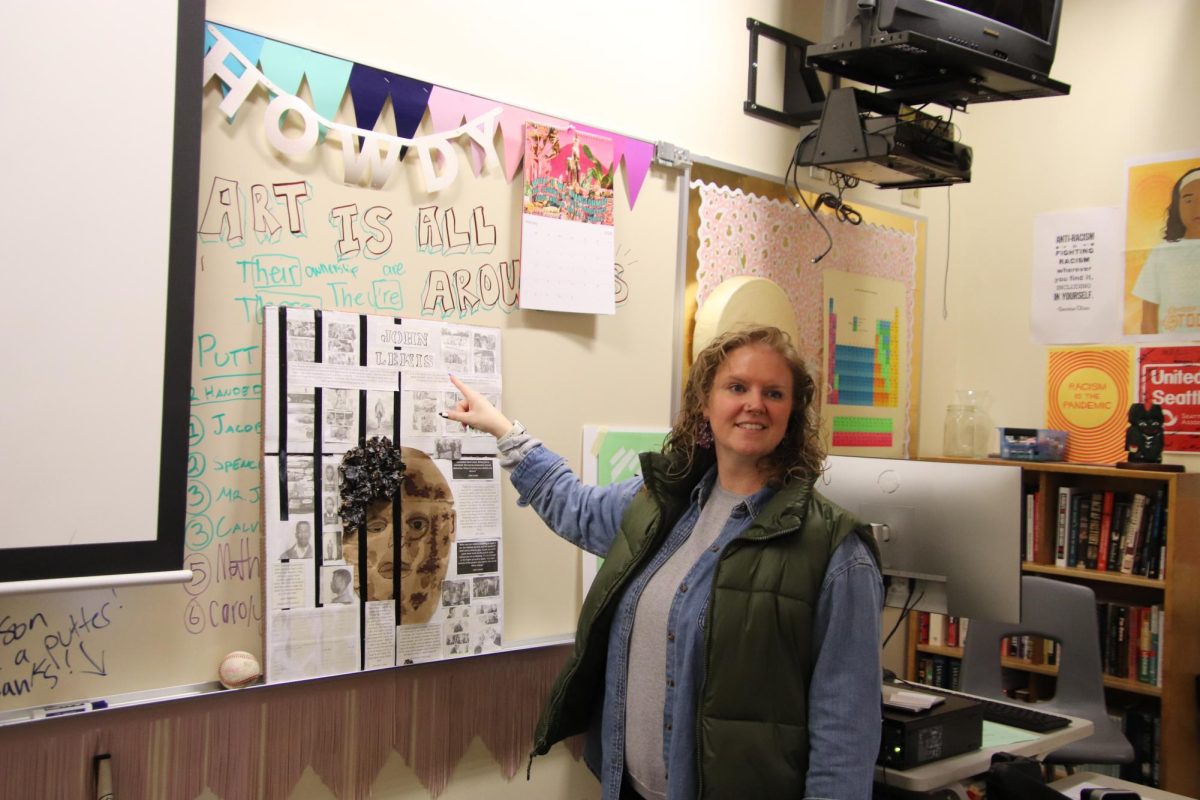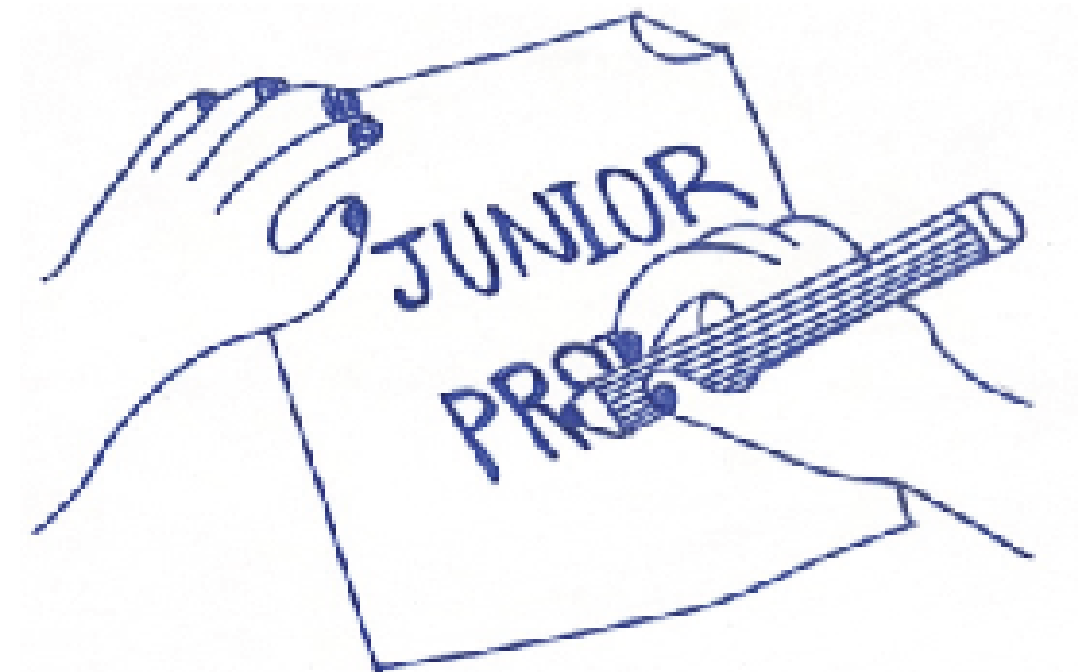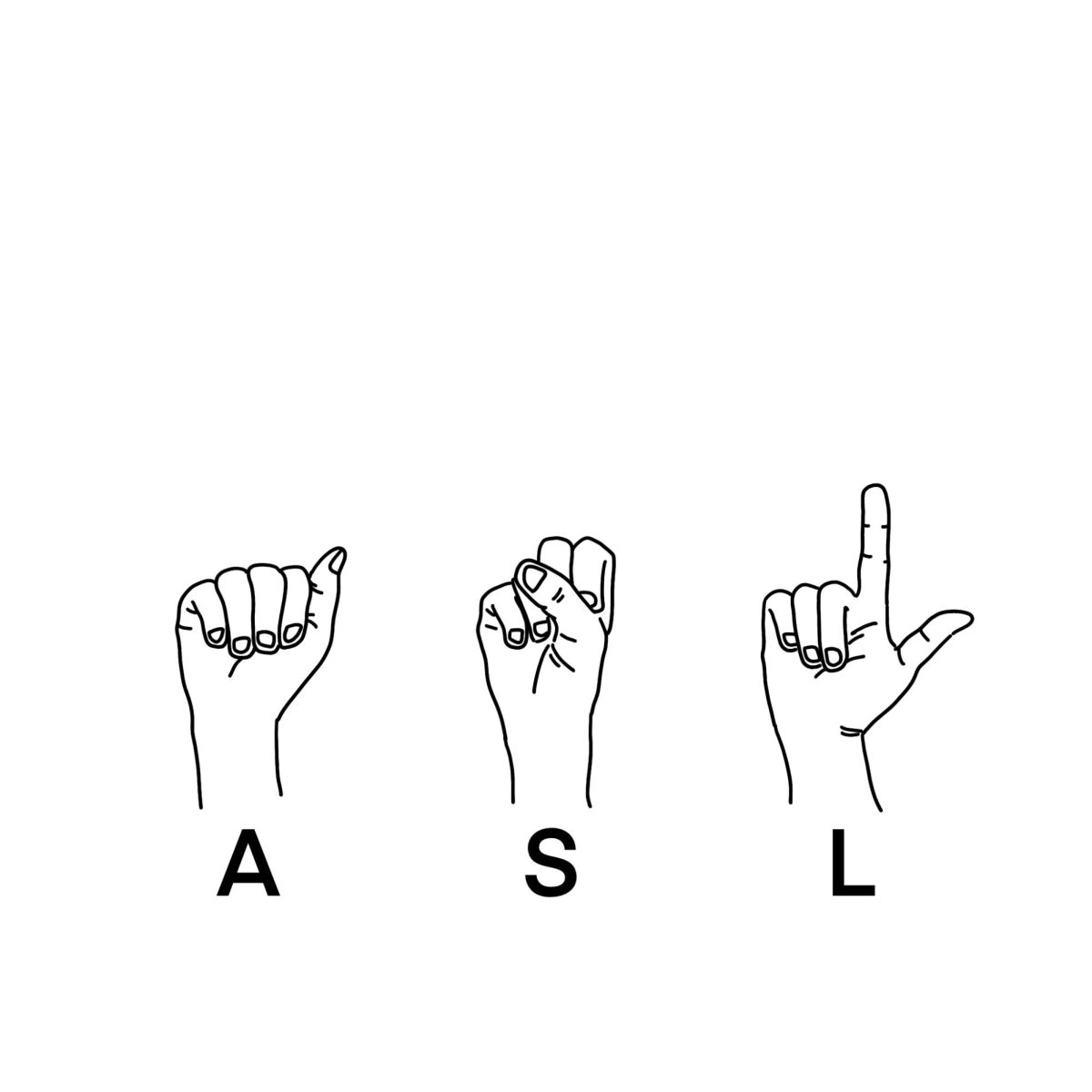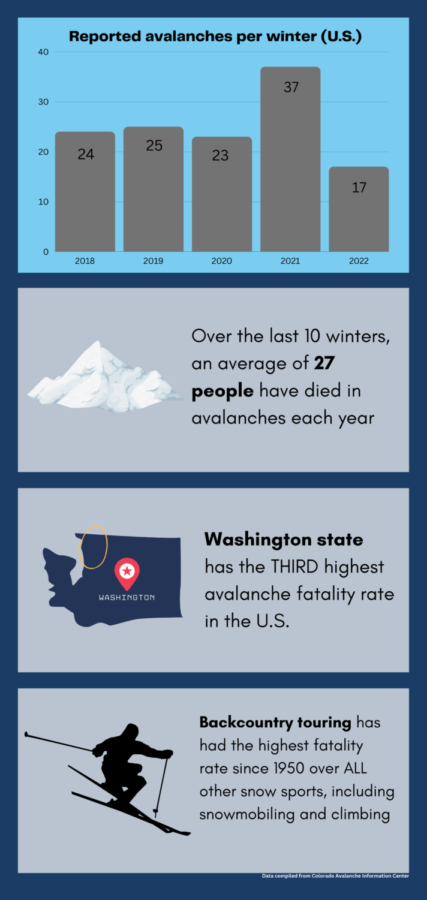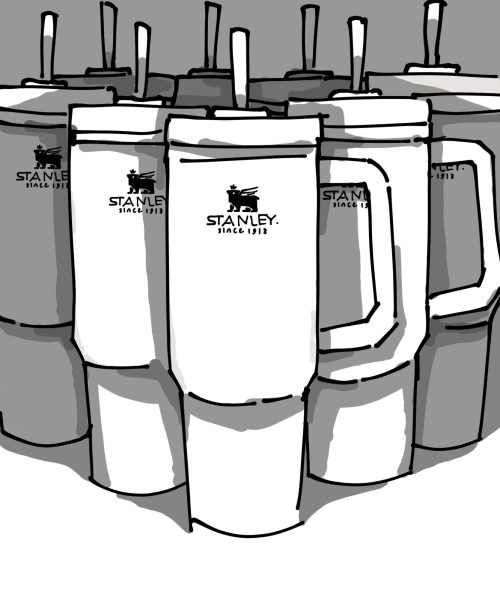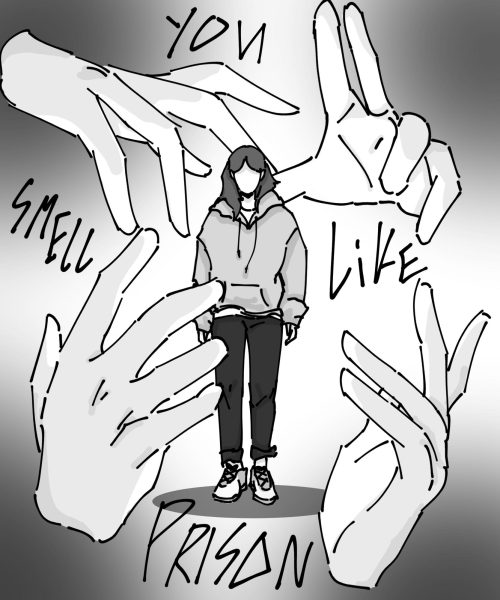Risk vs. reward: you can’t fake your safety in the backcountry
Misconceptions about safety off-resort has created a larger issue and danger for skiers and snowboarders
What would happen if you got caught in an avalanche, got injured or got separated from your group? If you’re going into the wilderness without alertness and with a false sense of safety, you’re taking a big risk.
March 16, 2023
Whether you’re thrilled when the mountains get snow or despise the cold, many are familiar with the phrase “risk vs. reward.” Sports like football, rugby and hockey are all notorious for being dangerous. However, the risks of being in the backcountry are often set behind the rewards of fresh turns and new snow.
Firstly, what is the backcountry? There are actually several kinds of backcountry in the mountains, but broadly the term is defined as the out of bounds and unpatrolled areas of the mountains. Sidecountry, more specifically, refers to the areas just outside of a ski boundary. Nearly six million of the 23 million skiers and snowboarders in the world venture into these areas.
I have been skiing since I can remember, and a few years ago I began venturing into the backcountry. I can’t tell you how many times I have seen people come flying into an unsafe area above me, risking the safety of everyone nearby – including myself. Especially when at any moment you could get caught in an avalanche sliding close to 90 mph, your actions have actual consequences when you’re in the backcountry.
I have had to accept the risks of heading out of bounds, but the human-added risks are something that I – and I know other experienced snow athletes – find aggravating. For me, my frustration stems from the already privileged atmosphere surrounding skiing and snowboarding. It is already such a luxury to be able to descend thousands of feet of mountain in just minutes, and the fact that people are not willing to do the right things when going in search of more snow and untracked turns is absurd.
However, there are a few reasons as to why people act so recklessly in the backcountry and sidecountry: accessibility, reliance on technology and a false sense of safety.
Because the sidecountry is right next to the resort, it is more common for people to travel into these areas than the true backcountry. When in the sidecountry, many have the misconception that this means you are safe because you aren’t that far from the resort. This in turn can cause people to be caught off guard and make bad decisions.
“[The sidecountry is] the safest kind of backcountry skiing, but it’s also the most likely to yield problems because it’s so easily accessible to people,” Noam Gundle, science teacher and avid outdoorsman, said.
What would happen if you got caught in an avalanche, got injured or got separated from your group? If you’re going into the wilderness without alertness and with a false sense of safety, you’re taking a big risk.
“There’s a lot of risk that you’re encountering in the backcountry,” Gundle said. “Some of it is caused by you, and some of it is caused by things you can’t anticipate, like other people out there skiing.”
This unsafe behavior is also rooted in a misconception many have: just because you have the right tools and technology doesn’t mean you are safe.
You might be familiar with an avalanche beacon, a probe, an avalanche shovel or an avalanche airbag. All of these tools are certainly necessary to have with you. With that said, these tools are for the moments after you – or your friend, or even some other group of people who were out there too – get caught in a bad situation.
“Do I want to use [an avalanche beacon]?” Gundle said. “Do I want to have to dig up my friends or have my friends dig me up? Heck no.”
Being in the backcountry with these tools doesn’t mean you’re free from danger, but instead it often gives people the feeling that they can take more risks.
Instead of relying on tools, people should be relying on their knowledge. Your brain and education surrounding backcountry safety are the best tools you can bring.
Bringing the right gear with you doesn’t do anything if you don’t know how to use it, read the mountain, assess the snow conditions and use your intuition to make good decisions. Taking courses, going with a group, knowing your plan and the area, using your gear and understanding the mechanics of the mountain are all vital for being safe in the backcountry.
“The best advice is knowing the area… going in a group and making sure you have all the right supplies,” Kate Lauderback, a senior and backcountry skier, said.
With the added risks of the increasing popularity of off-resort skiing and snowboarding, there are many risks that need to be accounted for when heading out into the wilderness. The rewards of being in the beautiful mountains of the Pacific Northwest don’t come until you’ve earned it.
